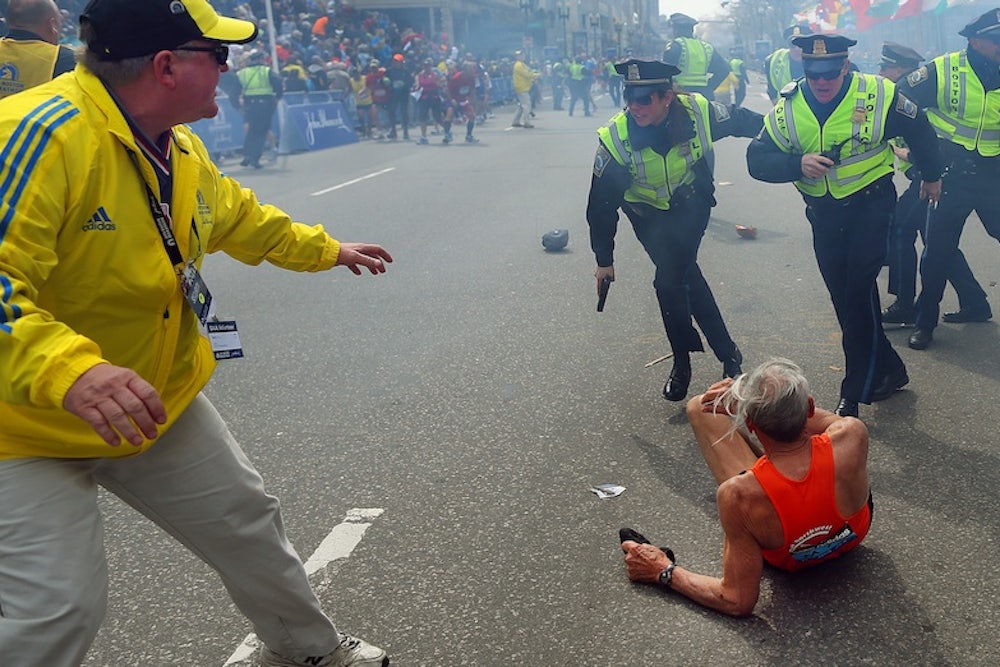The devil is in the details, and the infernal detail that stood out in the early reports from the deadly explosions at the finish line of today's Boston Marathon is that they occurred at 2:50 P.M. That was nearly five hours after the first wave of runners, including the top-ranked men, were scheduled to begin the race (in fact, the top-ranked women began even earlier). An elite runner will complete 26.2 miles, even on Boston's notoriously difficult course (whose most famous feature is the twenty-first mile's "Heartbreak Hill," a nickname we will never think of the same way again), in well under two-and-a-half hours. The winners of today's race, Lelisa Desisa of Ethiopia and Rita Jeptoo of Kenya, finished in two hours and ten minutes and two hours and 26 minutes, respectively--around noon, in other words. They were probably back at the hotel when the carnage came.
By contrast, the runner in what is quickly becoming the iconic photo, who is being aided by police after being knocked to the ground by the explosion, looks to be older. He is somebody who likely took around five hours to complete the race. He is a civilian not only in the political sense, but in the athletic sense. In other words, it seems likely that whoever was responsible for the explosions—assuming somebody was responsible—was deliberately targeting ordinary decent folk rather than the superstars. And, whatever message they were intended to convey, the explosions created the impression that being ordinary is no protection against extraordinary horror. That feeling is the definition of being terrorized.
I don't mean to suggest this apparent act of sports-related terrorism is worse than other instances of sports-related terrorism. But this seems different than previous ones. At the 1972 Summer Olympics in Munich, a Palestinian terrorist group targeted the Israeli athletes; they managed to murder eleven of them. Those men were selected to be victims mainly because they were Jews and Israelis, of course, but also because they were almost super-human: Olympic-class weightlifters and wrestlers and fencers, representing a version of the best people can be—young, talented, trained, sculpted.
The Olympics, which were targeted again with terrorism in Atlanta in 1996, are a series of grueling physical contests open only to the finest athletes. Marathons, by contrast, are grueling physical contests open to anyone who sets his or her mind to training for them. The retiree running his first race typically starts and finishes at the same lines as the Kenyan superstar, even if it takes him much longer to cover the distance between them. That older man in the photo pushed himself past the ordinary limits of human endurance by running 26.2 miles for no other reason, presumably, than to prove to himself that he could do it. Under normal circumstances, he would have earned no fame or glory for his achievement. For that reason, and for many more, it seems a pretty straight proposition that if we don't ride our buses, work in our offices, attend our concerts, and, now, go on our runs, then we are the losers. Training starts today.
